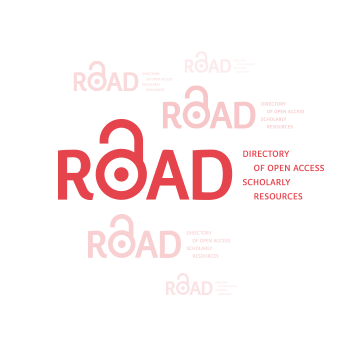Una Comprensión Ampliada del Trastorno Afectivo Bipolar a partir de la Neuropsiquiatría y Enfoques Clínicos Basados en la Evidencia
Resumen
La bipolaridad es un trastorno del ánimo que tiene repercusiones sobre la calidad de vida y en la estabilidad social, familiar, laboral y humana de todas las personas que se ven afectadas por este trastorno. El objetivo de este estudio de revisión ha consistido en la generación de una matriz de datos en donde se recolectó un número significativo de artículos científicos que abordan a este cuadro clínico a partir de los avances y desarrollos de la neuropsiquiatría. Se concluye que, la bipolaridad requiere no solo de la psiquiatría y la medicina para proporcionarle tratamiento a estas poblaciones, sino que también se necesitan emplear las más recientes técnicas y herramientas devenidas de los enfoques psicoterapéuticos basados en la evidencia para garantizar los cuidados psicosociales y psicológicos que necesitan los pacientes afectados por este trastorno, haciendo énfasis en las aportaciones que la neuroeducación puede hacer para vincularse al diseño de programas de reforzamiento mucho más eficaces para el abordaje de pacientes bipolares.
Descargas
Citas
Aragno, E., Fagiolini, A., Cuomo, A., Paschetta, E., Maina, G., & Rosso, G. (2022). Impact of menstrual cycle events on bipolar disorder course: a narrative review of current evidence. Archives of women's mental health, 25(2), 257–266. https://doi.org/10.1007/s00737-022-01217-9
Buoli, M., Serati, M., Caldiroli, A., Cremaschi, L., & Altamura, A. C. (2017). Neurodevelopmental Versus Neurodegenerative Model of Schizophrenia and Bipolar Disorder: Comparison with Physiological Brain Development and Aging. Psychiatria Danubina, 29(1), 24–27. https://doi.org/10.24869/psyd.2017.24
Callahan, B. L., McLaren-Gradinaru, M., Burles, F., & Iaria, G. (2021). How Does Dementia Begin to Manifest in Bipolar Disorder? A Description of Prodromal Clinical and Cognitive Changes. Journal of Alzheimer's disease: JAD, 82(2), 737–748. https://doi.org/10.3233/JAD-201240
Cossu, G., Preti, A., Gyppaz, D., Gureje, O., & Carta, M. G. (2022). Association between toxoplasmosis and bipolar disorder: A systematic review and meta-analysis. Journal of psychiatric research, 153, 284–291. https://doi.org/10.1016/j.jpsychires.2022.07.013
Fares-Otero, N. E., & Martinez-Aran, A. (2022). Social Stress in Bipolar Disorder. European neuropsychopharmacology: the journal of the European College of Neuropsychopharmacology, 60, 22–24. https://doi.org/10.1016/j.euroneuro.2022.04.002
Gallagher, P. (2021). Neuropsychology of Bipolar Disorder. Current topics in behavioral neurosciences, 48, 239–253. https://doi.org/10.1007/7854_2020_148
Gonçalves, M. C. B., Andrejew, R., & Gubert, C. (2022). The Purinergic System as a Target for the Development of Treatments for Bipolar Disorder. CNS drugs, 36(8), 787–801. https://doi.org/10.1007/s40263-022-00934-0
Guglielmo, R., Miskowiak, K. W., & Hasler, G. (2021). Evaluating endophenotypes for bipolar disorder. International journal of bipolar disorders, 9(1), 17. https://doi.org/10.1186/s40345-021-00220-w
Harrison, P. J., Geddes, J. R., & Tunbridge, E. M. (2018). The Emerging Neurobiology of Bipolar Disorder. Trends in neurosciences, 41(1), 18–30. https://doi.org/10.1016/j.tins.2017.10.006
Kato, T. (2017). Neurobiological basis of bipolar disorder: Mitochondrial dysfunction hypothesis and beyond. Schizophrenia research, 187, 62–66. https://doi.org/10.1016/j.schres.2016.10.037
Kato, T. (2019). Current understanding of bipolar disorder: Toward integration of biological basis and treatment strategies. Psychiatry and clinical neurosciences, 73(9), 526–540. https://doi.org/10.1111/pcn.12852
Kollmann, B., Yuen, K., Scholz, V., & Wessa, M. (2019). Cognitive variability in bipolar I disorder: A cluster-analytic approach informed by resting-state data. Neuropharmacology, 156, 107585. https://doi.org/10.1016/j.neuropharm.2019.03.028
Labalestra, M., Stefaniak, N., Lefebvre, L., & Besche-Richard, C. (2021). Influence of Psychological Vulnerability Factors for Bipolar Disorders on a Semantic Mediated Priming Task. Frontiers in psychology, 12, 598114. https://doi.org/10.3389/fpsyg.2021.598114
Laidi, C., & Houenou, J. (2016). Brain functional effects of psychopharmacological treatments in bipolar disorder. European neuropsychopharmacology: the journal of the European College of Neuropsychopharmacology, 26(11), 1695–1740. https://doi.org/10.1016/j.euroneuro.2016.06.006
Linke, J. O., Koppe, G., Scholz, V., Kanske, P., Durstewitz, D., & Wessa, M. (2020). Aberrant probabilistic reinforcement learning in first-degree relatives of individuals with bipolar disorder. Journal of affective disorders, 264, 400–406. https://doi.org/10.1016/j.jad.2019.11.063
López-Muñoz, F., Shen, W. W., D'Ocon, P., Romero, A., & Álamo, C. (2018). A History of the Pharmacological Treatment of Bipolar Disorder. International journal of molecular sciences, 19(7), 2143. https://doi.org/10.3390/ijms19072143
MacQueen, G. M., & Memedovich, K. A. (2017). Cognitive dysfunction in major depression and bipolar disorder: Assessment and treatment options. Psychiatry and clinical neurosciences, 71(1), 18–27. https://doi.org/10.1111/pcn.12463
Madireddy, S., & Madireddy, S. (2022). Therapeutic Interventions to Mitigate Mitochondrial Dysfunction and Oxidative Stress-Induced Damage in Patients with Bipolar Disorder. International journal of molecular sciences, 23(3), 1844. https://doi.org/10.3390/ijms23031844
Miola, A., Cattarinussi, G., Loré, M. L., Ghiotto, N., Collantoni, E., & Sambataro, F. (2022). Brain gyrification in bipolar disorder: a systematic review of neuroimaging studies. Brain imaging and behavior, 16(6), 2768–2784. https://doi.org/10.1007/s11682-022-00713-x
Munkholm, K., Vinberg, M., & Kessing, L. V. (2016). Peripheral blood brain-derived neurotrophic factor in bipolar disorder: a comprehensive systematic review and meta-analysis. Molecular psychiatry, 21(2), 216–228. https://doi.org/10.1038/mp.2015.54
Oldani, L., Altamura, A. C., Abdelghani, M., & Young, A. H. (2016). Brain stimulation treatments in bipolar disorder: A review of the current literature. The world journal of biological psychiatry: the official journal of the World Federation of Societies of Biological Psychiatry, 17(7), 482–494. https://doi.org/10.3109/15622975.2014.984630
Perugi, G., Vannucchi, G., Bedani, F., & Favaretto, E. (2017). Use of Stimulants in Bipolar Disorder. Current psychiatry reports, 19(1), 7. https://doi.org/10.1007/s11920-017-0758-x
Rossetti, M. G., Girelli, F., Perlini, C., Brambilla, P., & Bellani, M. (2022). A critical overview of tools for assessing cognition in bipolar disorder. Epidemiology and psychiatric sciences, 31, e70. https://doi.org/10.1017/S2045796022000555
Sadana, D., Gupta, R. K., Jain, S., Kumaran, S. S., G S, R., Thennarasu, K., & Rajeswaran, J. (2019). Neurocognitive profile of patients with Bipolar Affective Disorder in the euthymic phase. Asian journal of psychiatry, 44, 121–126. https://doi.org/10.1016/j.ajp.2019.07.037
Salagre, E., Vieta, E., & Grande, I. (2017). The visceral brain: Bipolar disorder and microbiota. El cerebro visceral: trastorno bipolar y microbiota. Revista de psiquiatria y salud mental, 10(2), 67–69. https://doi.org/10.1016/j.rpsm.2017.02.001
Salarvan, S., Sparding, T., Clements, C., Rydén, E., & Landén, M. (2019). Neuropsychological profiles of adult bipolar disorder patients with and without comorbid attention-deficit hyperactivity disorder. International journal of bipolar disorders, 7(1), 14. https://doi.org/10.1186/s40345-019-0149-9
Shi, Y., Tang, Y., Wu, Z., Chen, J., Huang, J., & Fang, Y. (2021). Schizophrenia, bipolar disorder, or intracranial aneurysm? A case report. Brain and behavior, 11(8), e2245. https://doi.org/10.1002/brb3.2245
Tondo, L., Vázquez, G. H., & Baldessarini, R. J. (2017). Depression and Mania in Bipolar Disorder. Current neuropharmacology, 15(3), 353–358. https://doi.org/10.2174/1570159X14666160606210811
Young, A. H., & Juruena, M. F. (2021). The Neurobiology of Bipolar Disorder. Current topics in behavioral neurosciences, 48, 1–20. https://doi.org/10.1007/7854_2020_179
Zovetti, N., Perlini, C., Brambilla, P., & Bellani, M. (2022). Childhood adversities and bipolar disorder: a neuroimaging focus. Epidemiology and psychiatric sciences, 31, e12. https://doi.org/10.1017/S2045796021000834
Derechos de autor 2023 Leonardo Alejandro Peñuela Velásquez , Pedro Luís Mendoza Múzquiz, Dionicio Enrique Martínez Saldaña, Nicolás Parra-Bolaños, Juan Sebastián Benjumea Garcés

Esta obra está bajo licencia internacional Creative Commons Reconocimiento 4.0.












.png)




















.png)
1.png)


